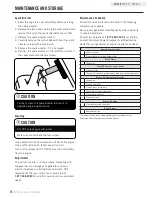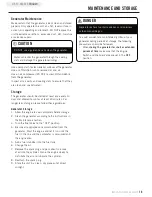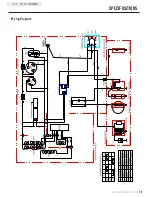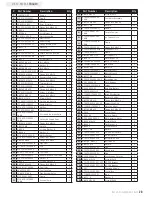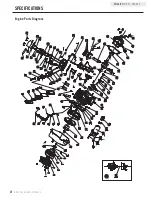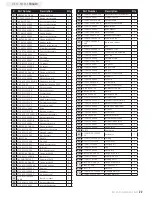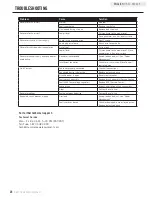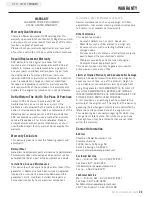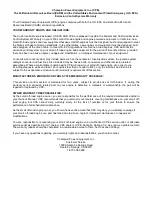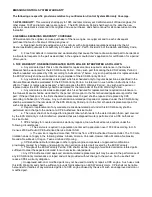
11
REV UF-51-940035-20120629
ENGLISH
UF-51-940035
Generator Location
Please consult your local authority . In some areas,
generators must be registered with the local utility .
Generators used at construction sites may be subject to
additional rules and regulations .
This generator must have at least five feet of clearance
from combustible material . Leave at least three feet
of clearance on all sides of the generator to allow for
adequate cooling, maintenance and servicing .
Place the generator in a well-ventilated area . DO NOT
place the generator near vents or intakes where exhaust
fumes could be drawn into occupied or confined
spaces . Carefully consider wind and air currents when
positioning generator .
Grounding
The generator system ground connects the frame to the
ground terminals on the power panel .
– The generator (stator winding) is isolated from the
frame and from the AC receptacle ground pin .
– Electrical devices that require a grounded receptacle
pin connection may not function properly .
Surge Protection
Electronic devices, including computers and many
programmable appliances use components that are
designed to operate within a narrow voltage range and
may be affected by momentary voltage fluctuations .
While there is no way to prevent voltage fluctuations, you
can take steps to protect sensitive electronic equipment .
1. Install UL1449, CSA-listed, plug-in surge suppressors
on the outlets feeding your sensitive equipment.
Surge suppressors come in single- or multi-outlet
styles . They’re designed to protect against virtually
all short-duration voltage fluctuations .
Voltage fluctuation may impair the proper
functioning of sensitive electronic equipment .
CAUTION
OPERATION
Do not operate or store the generator in rain, snow,
or wet weather .
Using a generator or electrical appliance in wet
conditions, such as rain or snow, or near a pool or
sprinkler system, or when your hands are wet, could
result in electrocution .
WARNING
If the engine starts but does not run make certain that
the generator is on a flat, level surface . The engine
is equipped with a low oil sensor that will prevent the
engine from running when the oil level falls below a
critical threshold .
NOTE
Keep choke lever in “Choke” position for only 1 pull of
the recoil starter . After first pull, move choke lever to the
“Run” position for up to the next 3 pulls of the recoil
starter . Too much choke leads to spark plug fouling/
engine flooding due to the lack of incoming air . This will
cause the engine not to start .
NOTE
Starting the Engine
1 . Make certain the generator is on a flat, level surface .
2 . Turn off all electrical loads connected to the generator .
Never start or stop the generator with electrical
devices plugged in and turned on .
3 . Turn the Fuel Valve to the “ON” position .
4 . Press the Battery Switch to “ON” .
5 . ELECTRIC START: Press and hold ignition switch in
the “Start” position until the engine starts . When
the engine starts release the ignition switch allowing
it to settle to the “Run” position . Holding down the
ignition switch for longer than 5 seconds can damage
the starter motor . If the engine fails to start after
5 seconds release the switch and wait at least 10
seconds before attempting to start the engine again .
6 . RECOIL START: Pull the starter cord slowly until
resistance is felt and then pull rapidly .


















